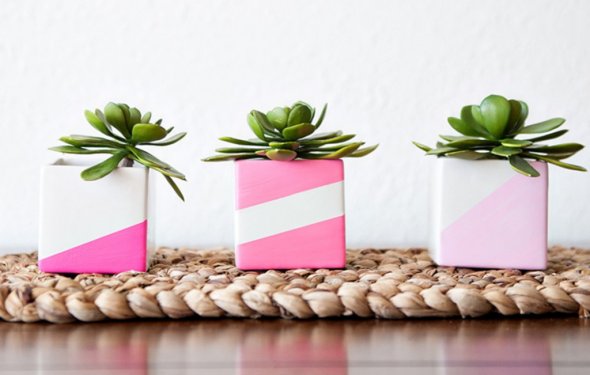Pinterest DIY Home Decor

Nobody knows for several how the pineapple became an essential element in the Christmas time decorations of Colonial Williamsburg, but a look at a brief history of the sweet good fresh fruit provides an educated estimate and a likely solution.
Local South American plant
The pineapple is native to south usa and ended up being likely brought in into the Caribbean by native tribes, who introduced the nice fresh fruit using them and transplanted it on several islands. Spanish explorers record finding the fruit and marveling at its sweetness when you look at the sixteenth century. The Dutch took the plant to Surinam, in which they cultivated it and in the end took it to Holland to attempt to develop it in greenhouses. Into the eighteenth century, the Brit attempted to grow the exotic plant in particularly built hothouses. Since the outside regarding the good fresh fruit resembled the pine-cone, while the sweet fresh fruit was similar to the surface and style of an apple, title was changed from the initial “anana” to pineapple.
Although we often associate the pineapple with Hawaii, it's not native to those countries often, having already been transplanted there from Jamaica because of the British in 1886, a full 200 years after the good fresh fruit was indeed developed and consumed in Europe.
Christian and imperial significance
Each pineapple plant gives a unique life to create an individual fruit, and since 1681, the pineapple was recognized as a Christian sign. Surrounding this time, Christopher Wren started utilizing pineapple finials on churches.
The pine cone has actually a long-held imperial value. The Romans placed pine cones to their buildings and monuments to symbolize confidence inside administrative, judicial, and protective power associated with state, perhaps following the rehearse of Babylonians. Thus the usage of pineapples on Wren's great public structures may mimic the pine cones on Roman structures, using added luster of English colonial energy. Pine cones will also be a mechanism for showing and dispersing seeds, and thus think of fertility, a very important characteristic for just about any society, and truly for an empire.
Shipments from Barbados and Bermuda to London
Since the pineapple was making its means into Anglo-American tradition, Captain Richard Ligon boarded the ship Achillis bound for western Indies from London. In 1657, he published a free account of their journeys, including a brief history of this Island of Barbados. He devoted three pages towards pineapple. Diaries from the period mention presents of pineapples presented towards king. And boats' manifests through the late 17th century contain lists of pineapples making their particular means from Barbados and Bermuda to England, often rotten upon arrival.
The sweetness and uncommon appearance associated with pineapple and its particular connection with fertility and farming managed to get a coveted delicacy in colonial America. With regards to had been served to visitors, these were naturally flattered during the honor, and so might have developed the theory that the pineapple ended up being considered an indication of the best as a type of hospitality.
Subject of musicians and artists
The good fresh fruit became the main topic of artists, as well as in 1661, it became an integral part of the coat of hands for the colony of Jamaica – a silver guard with a red mix and five fantastic pineapples adorning it. An Arawak girl supports the arms regarding left, and she actually is keeping a basket of fresh fruit, such as the pineapple.
The fruit was again and again imprinted, impressed, coated onto or sculpted into all method of objects, buildings, wallpaper, fabric, dishes, and mementoes.
Foundation choices feature numerous products with pineapple motif
The Colonial Williamsburg Foundation's choices include a glazed earthen jelly mildew with an impression of a pineapple over the top, made around 1780, and a multi-tiered silver dessert tray with a sizable cast pineapple under a pagoda roofing made in 1763. A tall time clock built in Pulaski County, Va., in 1809 includes an inlaid pineapple 10 ins high manufactured from mahogany, cherry, and pine. Into the Louvre in Paris, an accumulation of 18th-century snuff cardboard boxes produced in Dresden includes one with a top with a green and yellowish pineapple in a field of various other exotic fresh fruits.
In Williamsburg, archaeologists found big shards of Wedgwood pineapple ware like the "green and gold glaze" tea, cream, and sugar set now on screen in the DeWitt Wallace Museum of Decorative Arts.
Pineapple ware had been well-known for a short while in The united kingdomt when you look at the 1760s, but by 1770 Josiah Wedgwood expressed relief that their overstocks was in fact delivered to the colonies. In Virginia, a century of devotion into the pineapple wouldn't be eclipsed until the decorative arts of the Federal duration started initially to displace normal forms in support of Greek and Egyptian themes.
Pineapple in colonial architecture
Nobody had been a more impressive fan of this pineapple than Virginia's William Byrd. For James River door alongside his impressive house at Westover, in 1730 Byrd ordered a carved door-surround from London. It showcased a broken-scroll pediment with a pineapple in its center. Throughout the lake from Westover, Brandon Plantation in Prince George County has actually a pineapple from the pinnacle of its pyramidal roofing. Developed from a 1616 patent addressing 7, 000 miles on the James River, your website had an extended and lucrative trade experience of the western Indies, hence the prominence of this tropical pineapple.
Shirley Plantation, begun in 1725, has actually a geometric pineapple within apex of the roof. Around, two doorways feature pineapple woodwork online dating from 1771. Across bed room home causing the entry hall is a high-relief pineapple set inside a split pediment. And within the parlor door, is a pineapple between the volutes of a broken scroll. On dining area mantle rests a silver beverage caddy built in London in 1787. Its finial is an ivory pineapple with some silver top over the top.
Lord Dunmore together with pineapple
Scotland's commitment using the pineapple could have evolved due to the good fresh fruit's pointed similarity into the thistle. Pineapples had been grown in Scotland around 1732. Although laurels for creating the largest and most enduring pineapple autumn to Scotsman John Murray, Lord Dunmore, the last colonial governor of Virginia. At their property near Airth he built a formal garden and garden-house, that he transformed into an architectural folly – a 37-foot tall pineapple.
Pineapples today
Therefore, once Colonial Williamsburg began decorating with fresh greenery and fruit in 1930s, the pineapple had been an established design take into account structure, ceramics, and art. It only appears to explanation, then, that gorgeous fresh pineapples would become the centerpiece for creative accessories for which Colonial Williamsburg is famous today.
Information for following tale excerpted from “The welcoming Pineapple” by Michael Olmert, originally posted into the Winter 1997-98 edition of the Foundation's journal, “Colonial Williamsburg.”.

|
Home Improvement Decor Door Mat Set Of 2 Matching Non Skid Indoor / Outdoor Accent Rugs Plate Area Doormats, 24X16 Each - Blue Star Edition Lawn & Patio (House Improvement World)
|

|
JeremyArtOutlet Diy oil painting, Fantasy homes on Pinterest High Quality Wall Decor Home Decoration 20x24(inches) Home (JeremyArtOutlet)
|